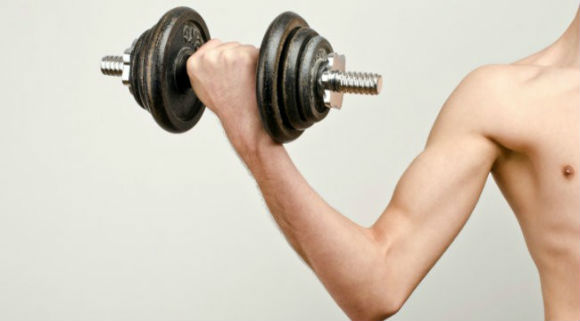I recently embarked on a total body overhaul; a mission to reduce body fat to levels…
Is This The Most Effective Way For Dads To Build Strength And Muscle?
A young Turk I’ve been helping get back into the gym after a lengthy hiatus asked for some guidance on how to structure his workouts now he’s been back at it for a while.
He’d previously asked me this: Do Protein Shakes Work? Check it out to find out.
Up until now he’s been hitting the gym three-to-four times weekly, and generally getting in a full body workout. The results have been impressive: coupled with regular cardio, this approach has helped him shed 6 or 7 kilos in six months and he’s become reacquainted with his previously well-disguised abs.
Having been somewhat bitten by the workout bug, he’s keen to move from ‘wandering generality’ to ‘meaningful specific’ when it comes to the workouts. This can mean only one thing: it’s time to hit the fabled and much-vaunted, push / pull / legs split.
What is this mythical beast, you ask? And how will she lead me into the glorious ‘house of gains’?
Well, you simply split your body (and your workouts) into three parts and train each one on its own, on its own separate day.
What Exactly Is The Push / Pull / Leg Split?
Push days will feature exercises targeting only the pushing muscles: chest, shoulders, triceps.
Pull days will feature exercises targeting only the pulling muscles: back, biceps.
Guess what happens on leg days? Well, abs (since technically we’re targeting all of the lower body). But really legs.
This works perfectly well if you’re hitting the gym (or rather, lifting weights) three times a week.
If you train in the gym 4 x per week, you can just keep rolling the workouts over a two week period.
Why Is Push / Pull / Legs Split So Good?
The push/pull/legs split is probably the most efficient workout split there is because all related muscle groups are trained together in the same workout.
This means that you get the maximum overlap of movements within the same workout, and the muscle groups being trained get an overall benefit from this overlap.
For example, when you train your chest with, say, bench press, you are also hitting your shoulders and triceps pretty hard. And when you train shoulders you are again involving your triceps. So it makes sense to work these all together in the same workout for maximum synergy and effectiveness.
The same applies when you train your back – your biceps are heavily involved – so it again makes sense to train these immediately afterwards so that they can derive the maximum benefit from the additional stimulation.
It also means you will have minimum overlap of movements between workouts, and this will facilitate better recovery than most other body part splits.
As always, don’t just take my word for it. Here’s a Muscle & Fitness post advocating a push / pull but aimed more for bodybuilders. Beware, this isn’t for the faint of heart. Dads who are newer to training stick with what I’ve outlined.
Sample Workouts
Here are three illustrative workouts for you to do on the P/P/L split, if you can manage three gym sessions a week. They’ll be 45-60 minute sessions by the time you’ve warmed up thoroughly, although one good thing about this split is because each workout focuses on complimentary muscle groups, you can reduce the number of warm-up sets and quickly rattle through the workout.
Sample Push Workout
Bench Press 4 x 8 @60kg
Seated Flyes 4 x 10 @50kg
Military Press 3 x 12 @40kg
Lateral Raises 4 x 15 @7kg
Cable Tricep Pressdowns 4 x 12 @23kg
Bar Tricep Pressdowns 3 x 12 @27kg
Sample Pull Workout
Seated Cable Rows 4 x 10 @80kg
Pull Ups 4 x 6
Face Pulls 3 x 12 @21kg
Cable Bicep Curls 4 x 12 @23kg
DB Bicep Curls 4 x 12 @12.5kg
Kettlebell Shrugs 4 x 25 @27kg
Sample Legs Workout
Barbell Squats 4 x 10 @60kg
Deadlifts 4 x 8 @80kg
Leg Press 3 x 12 @21kg
Kettlebell Swing 3 x 12 @24kg
Butterfly Sit-ups 4 x 20
Leg raises (machine) 4 x 10
Each of these workouts would represent a very solid shift, and are predicated on you doing a similarly solid warm-up to prepare your central nervous system for what’s coming and to reduce the risk of injury.
You could always treat the first set (and possibly even the second where four are prescribed) as a warm-up set. On ‘full tilt’ working sets, you should be struggling to finish it off.
Summary
And that’s it. A fairly simple way to structure your strength training workouts that’s (almost) guaranteed to yield great results as part of a muscle-building program.
Give it a whirl and be ready to enter the glorious ‘house of gains.’
SFD



